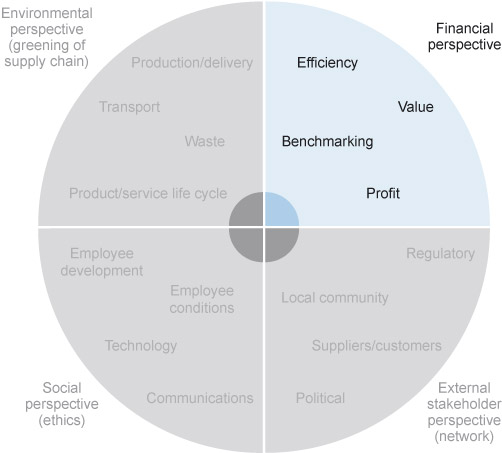3 The financial perspective
Earlier you looked at Crandall et al.’s (2015, p. 602) definition of sustainability for a business as ‘the ability to keep operating successfully’; in other words, the ability of administrators to maintain an organisation over the long term.
However, the definition of financial sustainability, the second perspective of the sustainable supply chain that we address in this course, depends somewhat on the nature of the organisation. Specifically, it may vary between for-profit organisations and non-profits, as well as on the business structure, revenue structure and overarching goals of the organisation. For both for-profit and non-profit organisations, financial capacity consists of resources that give the organisation the ability to carry out its mission, seize opportunities and react to unexpected threats while maintaining general operations of the organisation. According to Woods Bowman at DePaul University in the US, ‘financial sustainability’ refers to the ability to maintain financial capacity over time (Bowman, 2011). Regardless of an organisation’s for-profit or non-profit status, the challenges of establishing financial capacity and financial sustainability are central in keeping the supply chain sustainable.

